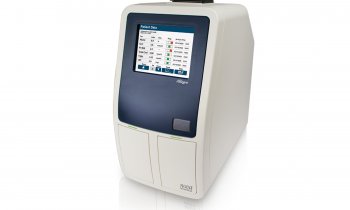Standardised algorithms and protocols for diabetic in-patients
Dot M. McSherry, i.t. Communications, reports
Dr Susan S Braithwaite, a visiting clinical professor in endocrinology at the Department of Medicine, University of Illinois, Chicago, specialises in the management of hyperglycaemia among hospitalised patients. Hyperglycaemia, the presence of an abnormally high concentration of glucose in the blood, is a common occurrence in adults who are hospital in-patients, especially among diabetic patients.
This condition is associated with many risks, such as surgical infection when undergoing cardiac surgery, and is also a strong predictor of adverse clinical outcomes from conditions such as stroke, congestive heart failure, acute myocardial infarction and community-acquired pneumonia.
With today’s pandemic of obesity and escalating levels of type 2 diabetes, hospitals must be proactive to identify patients who do not realise they are diabetic. Staff clinicians are increasingly challenged by the need to control hyperglycaemia without introducing morbidity or mortality that therapeutic misadventures during the treatment of hyperglycaemia can cause. The nature and severity of underlying medical conditions, comorbidities, organ dysfunction and nutritional status all cause insulin resistance to fluctuate. Because medications and carbohydrate exposure frequently change in a hospital environment, the treatment regime patients followed outside the hospital may no longer be appropriate or even safe, Dr Braithwaite emphasises.
‘The complexities of institutional care also add constraints that healthcare providers must be cognisant of to work within. Coordination of blood glucose monitoring, nutrition, and administration of medication all are needed for the successful management of diabetic patients. Handoffs by providers, shift changes of nurses, and patient relocations between the emergency department or the pre-admitting office, waiting rooms, the operating room, intensive and critical care units, general wards, and finally, home treatment, all require communication strategies,’ Dr Braithwaite adds.
Both individualised patient care and institutional standardisation of procedures to provide excellence in care are needed to maintain the safety of the diabetic patient. To make this goal easier to implement and achieve, Dr Braithwaite is working on the development of algorithms designed to deliver insulin with a certain degree of mathematical consistency for intravenous insulin use, and order sets that integrate the components of monitoring and treatment into an appropriate pattern for patients who receive their insulin by subcutaneous injection.
‘Different distinct pathways are needed for patients who are eating and those who are not eating, with choices for the administration of subcutaneous insulin,’ Dr Braithwaite said. ‘By standardising subcutaneous protocols with a variety of choices representing best practices under various conditions care for diabetic patients will become more uniform in its diversity and reduce the risk of error. My work is to create order sets capable of delivering the individualisation needed by patients, and then to get physicians’ prescribing styles to converge under these protocols so that the meaning of their orders will be recognisable by pharmacy and nursing staff and will represent best medical practices.
‘The use of protocols also makes patient treatment more efficient. Without protocols in place, every order no longer has to be re-evaluated as a new idea. When on-call physicians are called, because they are not familiar with the patient they often take the action that requires the least re-evaluation, but the decision they make may not be what the patient really needs. With protocols in place, for many contingencies the nurses no longer have to call the ordering physician or the on-call physician with questions and requests for clarification.
‘Individualisation can be met with a standardised approach, whether provided on paper or on an electronic medical record much like the format of a computerised order entry system. Diversification is needed with respect to an individual’s medical condition and treatment, yet the standardised protocols abolish peculiarities that make it hard for the readers of a physician’s order to interpret what was meant. Additional orders for specific situations, such as whether or not to withhold insulin if a patient misses a meal or has an interruption in tube feeding, are readily available.’
Dr Braithwaite also stresses that the use of protocols will reduce errors. ‘It is important for a patient’s physician who is knowledgeable about and has thought about the patient’s case to attach the correct preventive instructions along with insulin orders. But the physician may forget, or the additional orders mis-transcribed, or the orders are misplaced. With protocols defined within distinct pathways, all of the options are there, and can be filled in by checking off a box or filling in a number on a form. The pharmacy has a standard way of handling each item, and this will appear on the medication administration on record as a pre-printed additional direction with the medication.’
But she warns that many of the current computerised order entry systems are quite rudimentary. Orders for prescription medications are placed in isolation, without being seen as part of a pattern of care. Order sets or programmed pathways are needed to integrate the components of diabetes care, such as a matching of point-of-care glucose tests, meals, and medication. Insulin delivered intravenously creates even more complexity.
‘Carefully constructed intravenous insulin algorithms that relate the insulin dose to a model of what action is expected to occur have the potential to be safer and more successful than arbitrary rules. Arbitrary rules do not offer the flexibility that is needed to provide safe care for patients receiving intravenous insulin infusion. The algorithms need to be constructed based on underlying concepts that relate the estimates of needed insulin infusion rate to a patient’s specific condition, the previous insulin infusion rate, the patient’s previous response (rate of change of blood glucose), the current blood glucose, and the distance of the current blood glucose from target.’
Dr Braithwaite’s specific recommendations, including algorithm and protocol development, have been published extensively in peer-review medical journals and texts. She will be speaking about this subject at the annual meeting of the European Association for the Study of Diabetes in Stockholm in September.
07.09.2010










